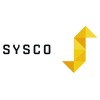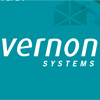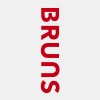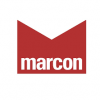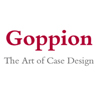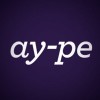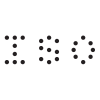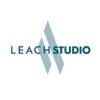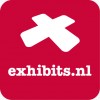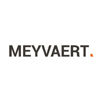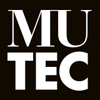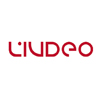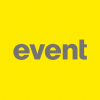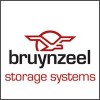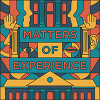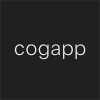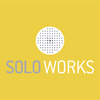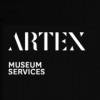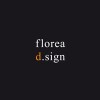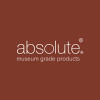Gravity Goldberg argues that in our desire to create innovative programming being alternative and whimsical is not enough; we must also be audacious. Gravity has done this at the Contemporary Jewish Museum in San Francisco by embracing the power and possibilities of a variety of narrative interpretations and outside points of view.
About the author: Gravity Goldberg is the Associate Director of Public Programs at The Contemporary Jewish Museum in San Francisco. Gravity initiated and continues to develop the acclaimed Gallery Chat series, broadening and deepening the conversations around exhibitions. She sits on the Board of the Council of American Jewish Museums. Afer receiving her MA in creative writing at SFSU, she worked for the Litquake Literary Festival for many years and is also the founder of Instant City: A Literary Exploration of San Francisco. Gravity gave a talk on Audacious Space at the Museum Ideas 2016 conference in London

Above: Wendy Van Dyck of the San Francisco Ballet School explores the kinetic qualities of Camille Utterback’s work through dance and interaction with Utterback’s Entangled installation © Contemporary Jewish Museum, photo by Leah Greenberg
As public program professionals it is our desire to create innovative programming that connects to our exhibitions and excites our audiences. Our journals and conferences tell us that audiences are less interested in traditional forms of museum programming and more intrigued by novel experiences. In response, museums are moving public programs out of the auditoriums and into alternative spaces like lobbies, commons, or galleries. It’s why we include circus performers and knitting circles. However, whimsical is not enough; we also must be audacious. The next step is to boost the excitement and unpredictability in our galleries. We can do this by tweaking a classic approach. Let’s rethink who we invite to narrate.
“Being whimsical is not enough; we also must be audacious. The next step is to boost the excitement and unpredictability in our galleries. We can do this by tweaking a classic approach. Let’s rethink who we invite to narrate”
I call this Audacious Space – making our galleries audaciously welcoming by embracing a wide variety of narrative interpretations and outside points of view. By reimagining who can talk about the work in the exhibition, we become open to new possibilities. One example we developed at The Contemporary Jewish Museum (The CJM) is a program model we refer to as the Gallery Chat.
Several years ago at The CJM, we began to experiment with a new form of gallery-based programming – Gallery Chats – twenty minute talks held on Friday afternoons during lunchtime about the art or stories in an exhibition, and given by a motley array of speakers that has included scholars, poets, thought-leaders, innovators, dancers, and even intellectually minded bike couriers.
Unlike the conventional curator or docent led talk, the Gallery Chat offers visitors a unique engagement with the exhibitions because they are given by “outsiders,” speakers who are not part of the official narrative and who have no training in the didactic language often used to speak about art or exhibitions. These guest speakers share personal stories or new interpretations that enrich the exhibition narrative. The real-time construction of the “extra-narrative”—this layering of additional stories onto the exhibition content – comes from varied sources: the lawyer from the Electronic Frontier Foundation (EFF) who deciphers the codes around a redacted text in an Arnold Mesches painting; the rock historian Greil Marcus musing on the interpretive genius of Amy Winehouse; or a ballet dancer and her student interacting with a digital sculpture. These extra-narratives not only enhance and provide substantive content to the exhibition; they also demonstrate that a wide variety of opinions and interpretations are welcome and appropriate.
“Visitors who encounter these non-traditional gallery experiences come away with an appreciation of the limitless possibilities of interpretation. They feel welcome, engaged and at ease”
The visitors who encounter these non-traditional gallery experiences come away with an appreciation of the limitless possibilities of interpretation. For many, one obstacle to feeling comfortable in the lofty arena of the museum comes from a fear of seeming ignorant, or worrying that there is a correct way to “read” the art. Even perhaps that art is deliberately obtuse and so that the only way to participate intellectually is to have a background in art history. As a recent visitor prank at the San Francisco Museum of Modern Art (SFMOMA) illustrated, sadly many feel that art is there to trick them. An assumption is that contemporary art has one thing to say and that correct interpretation belongs to trained museum professionals. By taking the interpretation out of the hands of officialdom, the Gallery Chat dismantles expectations of authority, and in the best cases, creates an Audacious Space where visitors are surprised and delighted. They feel welcome, engaged and at ease. The Gallery Chat creates an inviting space where many ideas and points of view are welcome.
Additionally, this model is an incredibly economical way to develop a robust schedule of programming for considerably less time and cost than the lecture hall model. When forty visitors show up on a Friday afternoon specifically for a gossipy talk by the photographer Judy Dater about Arnold Newman, or eighty-eight for Ed Hardy’s talk on Amy Winehouse’s tattoos, it’s hard not to be impressed. Especially as attendance at most of our seated art lectures ranges from forty to eighty guests. Gallery Chats save time and resources, the cost of setting up a lecture hall, staffing it, readying the audio-visual components, ticketing, etc. not to mention marketing and the stress of whether anyone will come. This all adds up. The swift-footed gallery talk has much lighter demands on staff and resources. And so to everyone’s satisfaction, a lot more can be accomplished with a smaller staff and budget.
“That Gallery Chats are limited to twenty-minutes is very deliberate. The short length appeals to the pop-up, need-to-be-there, blink and you’ll miss it culture. It doesn’t demand you sit down and commit an entire evening – more a coffee date than a dinner date”
That Gallery Chats are limited to twenty-minutes is very deliberate. The short length appeals to the pop-up, need-to-be-there, blink and you’ll miss it culture. These talks are perfect for generating online content, which we have been doing through recording and posting the talks on Soundcloud. We aim to entice the local workers to pop in during lunch. The CJM is at the center of a busy urban hub between the financial and shopping districts. Twenty minutes is ideal for a lunchtime talk. While encouraging a certain amount of sustained attention, it doesn’t demand you sit down and commit an entire evening – more a coffee date than a dinner date.

Velina Brown, San Francisco Mime Troupe in Bill Graham and the Rock and Roll Revolution © Contemporary Jewish Museum, photo by Leah Greenberg
Like so many good things, the Gallery Chat format developed as a solution to a challenge. In 2013 the CJM co-organized with the SFMOMA Beyond Belief: 100 Years of the Spiritual in Modern Art, a dynamic exhibition of painting, photography, and sculpture of iconic works from the SFMOMA’s permanent collection. Without knowing the intention of the artists who created the work, we were challenged with making the case for the title. As Associate Director of Public Programs, I developed a series of gallery-based talks playfully called The Wonder Tours. I invited spiritual leaders who also had a visual arts background to choose a single artwork as a trigger for a discussion about spirituality or religion. A Zen priest led a talk and meditation in front of an Agnes Martin painting, a reverend spoke about the Christian origins of evil in front of Lilith by Kiki Smith, and a rabbi waxed on about exegesis in concert with Mark Rothko’s No. 14, 1960, a luminous orangey-red rectangle hovering over a smaller black one. These spiritual leaders discussed the formal aspects of the art through their particular spiritual lens while standing in front of the work. The talks succeeded in creating an “aha” moment, while providing unique insights into the meaning of the spiritual in art.
Standing in front of the original work also means the art is front and center. In a lecture hall with a seated audience, the art is projected on a screen. The spectacular details of paint, or light, or space, are not accessible. A Rothko is reduced to flat rectangles. Or with a more complicated digital installation like Camille Utterback’s Entangled (2015), it’s impossible to convey it’s magic without physically interacting with the art. In the gallery model the immediacy of the art is primary, it’s right there in your face to enjoy through all your senses.
Talks in the galleries also permit sustained looking. In our time-pressed world, and super-sized museums, it’s difficult to give ourselves permission to spend long periods gazing at one piece of work. The Gallery Chat addresses the unfortunate reality of the thirty-second sweep – the average time spent looking at a work.
Each Gallery Chat allows us opportunities for forging new partnerships with important and like-minded communities throughout the Bay Area. The Spiritual leaders invited members of their laity; those who should be a natural audience for the exhibition, but might not have otherwise know about it or come to the Museum. The design world’s young creatives attended the Designing Home: Jews and Midcentury Modernism talks. Each time we invite a new speaker, we connect to their unique audience base. The CJM’s exhibitions and programming attract more attention and fresh audiences.
Most Gallery Chats fall into combinations of these three categories:
Cultural – The speaker develops a conversational aesthetic with a cultural reference point, this also includes the more “chatty” chat where the speaker has a personal connection to the work:
• Film critic and “Czar of Noir” Eddie Muller discussed the noirish implications of PA & PE by Peter Alexander, depicting a glowering Los Angeles universe.
• Politician Carol Ruth Silver shared her experiences as a Mississippi Freedom Rider in conjunction with the exhibition Chasing Justice.
Artistic – Living artists perform a new poem, dance, or musical piece in response to a work of art:
• Former principal ballerina from the San Francisco Ballet, Wendy Van Dyck and her student improvised to the movement-activated digital installment Entanglement.
• Poet Kevin Killian imagined a love story between Carl Sandburg and Marilyn Monroe inspired by a photograph in Arnold Newman: Masterclass.
• Brandon Brown wrote a witty poem called “Letters to Dying Hollywood Stars” as a companion to Dying Star Letters, 2010, by Katie Patterson.
Historical – A fact-based talk that delves into one story in the exhibition:
• During the object and thesis-rich exhibition Designing Home: Jews and Midcentury Modernism, the majority of chats explored the history of design. Included were a talk about the history of artist craft colony Pond Farm, the origins of the modern album cover, the New Direction covers by Alvin Lustig by Chronicle Book’s Michael Carabatta, and more.
Since its development in response to Beyond Belief, the Gallery Chat has become a mainstay in the CJM’s programming. We’ve since scheduled Gallery Chats for twelve exhibitions, and have invited many dozens of outsider speakers to add the “extra-narrative” component.
“These intimate site-specific programs can take part in the larger, global conversations. It is a model that is easy to implement in almost any museum”
While the Gallery Chat does not require us to abandon older methods of programming, it allows us to accomplish so much more. The Gallery Chat enlivens our galleries, delights our audiences, connects us with new partners, and creates substantial narrative online content. This online content – the recordings of the short talks – ultimately results in an extra-narrative catalogue of first-person and other creative responses to exhibitions. Therefore these relatively intimate site-specific programs can take part in the larger, global conversations. It is a model that is easy to implement in almost any museum setting as long as one embraces an audacious hospitality
Gravity Goldberg, Associate Director of Public Programs,
Contemporary Jewish Museum, San Francisco





